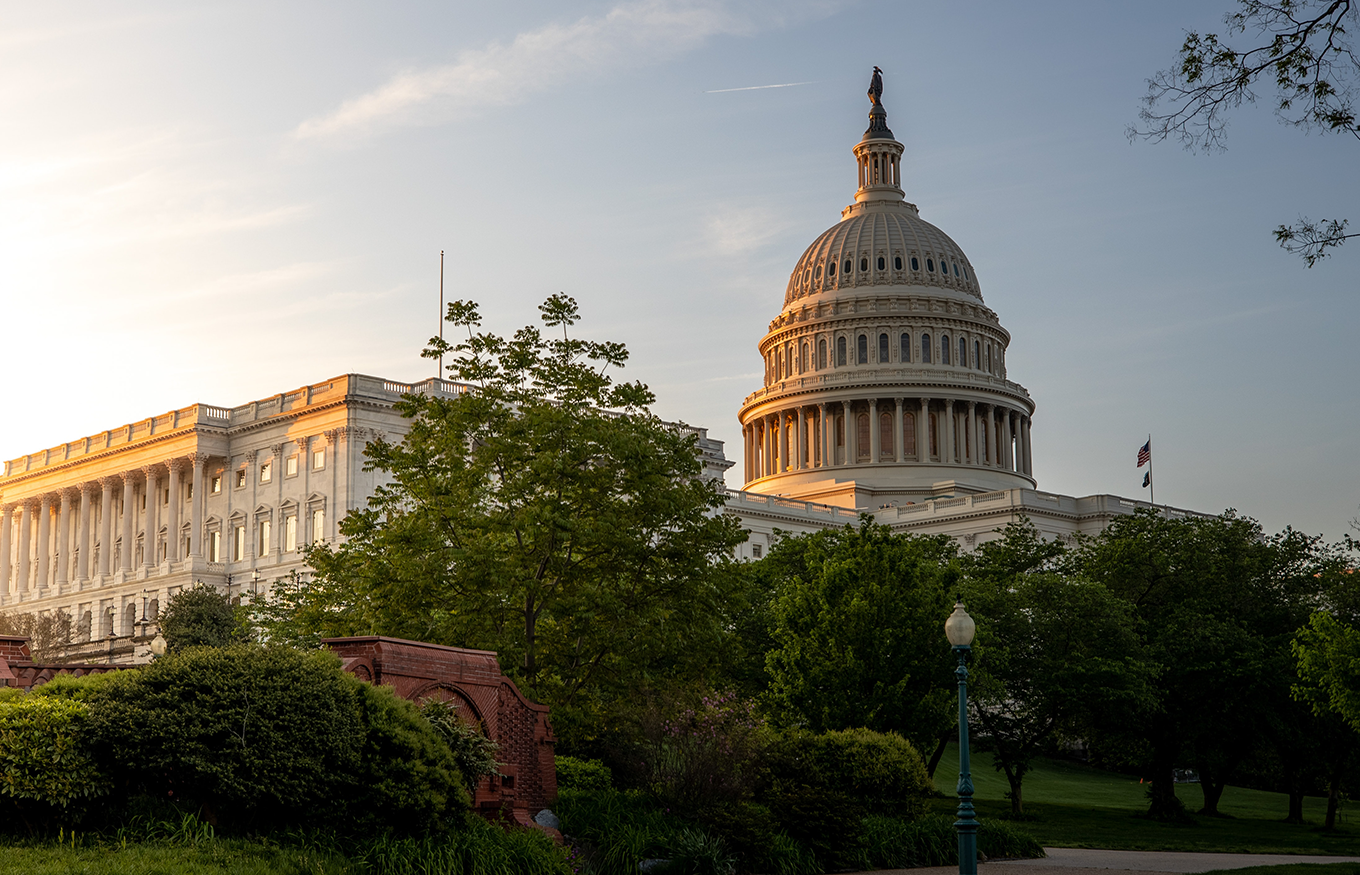Legislative staff are crucial to the daily operations of Congress, both on Capitol Hill and in district offices. Congressional staffers help craft policy, advance legislation, and handle inquiries from constituents and the press. But despite their responsibilities, staffers in lawmakers’ personal offices, congressional policy committees, and district offices are widely and consistently undercompensated for their work, especially in entry-level positions.
While significant progress has been made recently to address inadequate staff pay in the House of Representatives under the leadership of Speaker Nancy Pelosi (D-CA), further steps are needed to ensure that entry-level staffers from all socioeconomic backgrounds are able to thrive in both chambers of Congress.
Fairly compensating congressional staff, especially junior-level staffers, will help Congress attract and retain a diverse and capable workforce. Giving staff both the financial incentive and ability to stay in their roles and advance upward means that members of Congress won’t need to keep retraining employees and that valuable institutional knowledge will be retained. In these ways, better financial compensation for staff will both help curb the brain drain from Capitol Hill to K Street and guard against the undue influence of special-interest lobbyists.
Here are the four reasons why Congress should invest in greater compensation for its junior staff.

1 ) 1 in 8 congressional staffers in D.C. aren’t paid a living wage
For many jobseekers who don’t have financial help from relatives or time for an additional job, entry-level jobs working for Congress in a city as expensive as Washington, D.C. are simply not an option.
A new Issue One analysis of LegiStorm data shows that 13% of D.C.-based congressional staff — or roughly 1 in 8 staffers — made less than a living wage in 2020, which the Massachusetts Institute of Technology (MIT) estimates is $42,610 for an adult with no children in Washington, D.C. That’s nearly 1,200 staffers, many of whom have taken on side gigs or relied on financial support from family members to pay their bills.
A living wage is a floor, not an ideal salary. According to MIT, a living wage is best understood as a “minimum subsistence wage,” i.e., the amount needed to meet one’s basic needs, and it doesn’t allow for expenditures that many Americans consider normal parts of a good life, such as vacations, meals at restaurants, owning a car, or saving for retirement. And yet, far too many congressional staff salaries don’t even meet this baseline.
A living wage is a floor, not an ideal salary. And yet, far too many congressional staff salaries don’t even meet this baseline.
According to LegiStorm, a staff assistant — the most common entry-level position on Capitol Hill, with at least one in every office — made a median annual salary of $38,730 in 2020. That’s roughly $4,000 less than MIT’s estimated living wage in Washington, D.C., and 30% less than the national average starting salary for 2020 college graduates. A striking 70% of D.C.-based staff assistants earned less than a living wage in 2020.
A similar trend holds true for other junior-level positions, such as press assistant (median salary: $43,860) and legislative correspondent (median salary: $44,050).
Just 34% of congressional staffers in the personal offices of members of Congress report being satisfied with their financial compensation, according to a recent survey released by the House Office of Diversity and Inclusion. And 45% admitted they had “seriously considered looking for employment elsewhere.”
Challenges related to pay extend beyond D.C. as well. About a third of congressional staffers work in district offices across the country. Despite operating as the primary contact for many constituents, district staff are often left out of the conversation about compensation and benefits. But in 2020, nearly 15% of district staffers made less than $40,000, according to Issue One’s analysis of LegiStorm data, compared to just 9% of D.C.-based staff. Staff assistants working in state and district offices earned a median yearly income of just $38,400 in 2020.
If Congress wants to attract a capable workforce, increasing pay for entry-level workers is the place to start.

2 ) Most congressional staff are young, junior-level workers
Momentum for addressing inadequate staff pay has been mounting. But so far, House and Senate actions have focused primarily on raising pay for senior-level staffers.
In August, Speaker Pelosi announced that the maximum salary for House staffers would increase from $174,000 to $199,300, a crucial step that decouples staff pay from member pay and allows top staffers to earn more than their bosses. House appropriators also proposed a 21% increase in the amount of money members of Congress can spend on their offices and payroll, which should have a significant impact, as long as members actually use these funds rather than playing politics with them.
However, Issue One’s analysis of LegiStorm data indicates that these policy changes will only affect around 3% of congressional staff. That’s because the distribution of staff on Capitol Hill is bottom-weighted — 60% of staffers are under the age of 35 and 45% of staffers in 2020 made less than $60,000.
While top-level staff are now looking at significant and well-earned pay increases, the average House staffer hasn’t received a raise in over 14 months, according to a recent survey by the House Office of Diversity and Inclusion.
Policy aimed at boosting staff pay and retention must keep in mind that the majority of Congress’ workforce and legislative capacity comes from staffers earning wages on the lower end of the spectrum.
Simple technical changes could further support junior-level staffers, such as increasing pay frequency for House staffers from once to twice a month (as the Senate does) and creating standardized pay bands — recommendations from the bipartisan Select Committee on the Modernization of Congress.

3 ) Insufficient pay is hurting Congress’ ability to represent all Americans
Insufficient pay heightens the challenge of recruiting and retaining a diverse staff. While the members of 117th Congress are the most diverse in American history, racial and ethnic diversity among congressional staff is still out of line with the broader American public, especially at higher positions and salary levels. People of color account for 40% of the U.S. population, but just 14% of all top House staff and 11% of all Senate member office top staff.
These disparities exist across non-white racial and ethnic groups. According to the Joint Center for Political and Economic Studies, Latinos account for 18.5% of the U.S. population, but just 3.8% of top staffers in Senate member offices. Black Americans represent 13.4% of the population, but only 3.1% of top positions in Senate member offices. And Asian Americans/Pacific Islanders are 6.1% of the U.S population, but 2.7% of top positions in Senate member offices. Similar disparities have been demonstrated in the House. And while Democratic Senate offices employ more top staff of color than Republican offices, both parties under-employ staffers of color at high-level positions. Nearly three-quarters of House members have no top staff of color in their offices.
Greater pay is necessary to retain staff of color in top roles, where key legislative policy is crafted. At the same time, a focus must be placed on increasing pay and reducing barriers for entry-level staff of color as well. In October, the Congressional Black Associates and the Senate Black Legislative Staff Caucus issued a public letter addressing these concerns and calling for key reforms, including stronger pipelines for talent, greater investment and career opportunities, and “livable wages for all congressional staffers.”
Without these reforms, Congress will continue to be limited in its ability to represent and be responsive to all Americans.

4 ) Better pay can help curb the congressional brain drain
Far too often, working on Capitol Hill is seen as a pathway to lucrative jobs in the lobbying industry, rather than a career in public service.
During the last decade, the American population has grown and federal spending has increased. But during the same period of time, the number of congressional staff declined by 16% — dropping from 16,500 in 2010 to 13,880 in 2020, according to LegiStorm.
Fewer staff, greater responsibilities, and long hours — combined with low pay and increased threats from political violence — has created a significant drain of talent and institutional knowledge from Capitol Hill. One recent study found that 65% of staffers plan to leave Congress within five years, with many taking their valuable expertise and institutional knowledge with them to K Street lobbying firms.
Too often, this dynamic allows experienced lobbyists to run circles around congressional staff with less than a decade of experience. Currently, the average House staffer in a member office has only been in their position for 2.5 years, while the average legislative assistant — who advises a member of Congress on key subjects — has been in their position for less than a year. Veteran lobbyists are simply more familiar with the ins and outs of how Congress works and the politics within each chamber of Congress than junior staff who are fresh out of college or graduate school.
Congress needs to invest in itself, including its staff, in order to ensure that legislative policy decisions are made on the merits of the arguments, not just the connections of clients pushing for specific outcomes. Better-paid staffers who feel valued for their skills and expertise will be more likely to keep working on Capitol Hill, where their knowledge and experience will serve the interests of the people.

Conclusion: It’s time to shift focus to junior staffers
While raises for top staff represent a step forward, focus must be shifted to the lower-level staff who make up a far greater percentage of the overall workforce and are the pipeline of talent to upper positions.
Instituting better pay for junior staff isn’t just fair for these employees; it’s also the best move for constituents. More competitive starting wages will allow Congress to attract a workforce that is more representative of the American people and more effective at addressing the issues facing all communities.
Instituting better pay for junior staff isn’t just fair for these employees; it’s also the best move for constituents.
There are positive signs in the effort to ensure that congressional staff are fairly compensated for their work. The number of staffers making below $40,000 (in 2020 dollars) has declined significantly over the last decade, from around 21% of staff in 2011 to just 11% in 2020. At the same time, proposed increases in lawmakers’ office budgets, increased attention to benefits, and boosts in pay for top-level staff are positive developments. But Issue One’s analysis of LegiStorm data shows that Congress has a long way to go if it wants to pay all of its employees a living wage.
Ultimately, Congress is no different than any other enterprise: You get what you pay for. Americans have every right to expect a government that is not only able to perform its job, but perform it well. If we want a Congress that is capable of meeting its responsibilities, both members of Congress and the public must be willing to invest in the institution by properly and fairly compensating all congressional staff. In order to meaningfully address its staffing challenges, Congress must raise its pay floor.








